
Кіберспортивні огляди, новини та проходження відеоігор
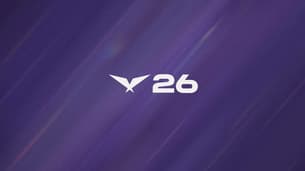 Посібник глядача Кубка LCK 2026: дати, розклад, формат, учасникиПовний посібник з Кубка LCK 2026: формат турніру, деталі групового етапу та офіційний розклад. Перевірте оновлені склади команд T1, Gen.G, HLE та інших, які змагаються за місця у першій трибуні.
Посібник глядача Кубка LCK 2026: дати, розклад, формат, учасникиПовний посібник з Кубка LCK 2026: формат турніру, деталі групового етапу та офіційний розклад. Перевірте оновлені склади команд T1, Gen.G, HLE та інших, які змагаються за місця у першій трибуні.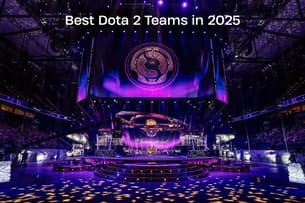 Найкращі команди Dota 2 у 2025 роціНайкращі команди Dota 2 у сезоні 2025 року - рейтинг топ-10 на основі результатів турнірів та командної гри.
Найкращі команди Dota 2 у 2025 роціНайкращі команди Dota 2 у сезоні 2025 року - рейтинг топ-10 на основі результатів турнірів та командної гри. Посібник для глядачів Lock-In LCS 2026: дати, розклад, формат та команди-учасниціОзнайомтеся з відродженням LCS 2026 Lock-In. Отримайте детальну інформацію про швейцарський етап Bo3, плей-оф драфту Fearless та повні склади команд, включаючи Cloud9, FlyQuest та LYON. Ваш найкращий посібник для глядачів.
Посібник для глядачів Lock-In LCS 2026: дати, розклад, формат та команди-учасниціОзнайомтеся з відродженням LCS 2026 Lock-In. Отримайте детальну інформацію про швейцарський етап Bo3, плей-оф драфту Fearless та повні склади команд, включаючи Cloud9, FlyQuest та LYON. Ваш найкращий посібник для глядачів.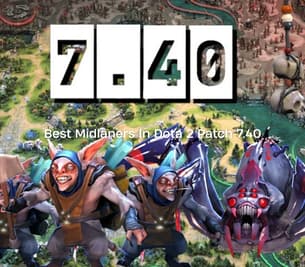 Найкращі гравці середньої ланки в Dota 2 Patch 7.40Відкрийте для себе найкращих гравців середньої лінії в Dota 2 Patch 7.40 — покращення, сильні сторони та відсоток виграшів.
Найкращі гравці середньої ланки в Dota 2 Patch 7.40Відкрийте для себе найкращих гравців середньої лінії в Dota 2 Patch 7.40 — покращення, сильні сторони та відсоток виграшів. Посібник для перегляду сезону LEC проти 2026: дати, розклад, формат, учасникиLEC Versus 2026 вже тут. Перегляньте повний розклад матчів та склади команд. Слідкуйте за протистоянням між ветеранами LEC та гігантами ERL у гонці за перший титул сезону.
Посібник для перегляду сезону LEC проти 2026: дати, розклад, формат, учасникиLEC Versus 2026 вже тут. Перегляньте повний розклад матчів та склади команд. Слідкуйте за протистоянням між ветеранами LEC та гігантами ERL у гонці за перший титул сезону.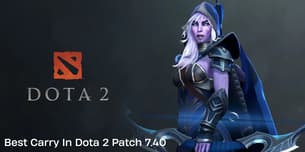 Найкраще перенесення в патчі Dota 2 7.40Відкрийте для себе найкраще перенесення в Dota 2 Patch 7.40 - статистику, силу та шанси на перемогу.
Найкраще перенесення в патчі Dota 2 7.40Відкрийте для себе найкраще перенесення в Dota 2 Patch 7.40 - статистику, силу та шанси на перемогу.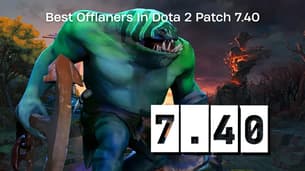 Найкращі офлайнери в патчі Dota 2 7.40Відкрийте для себе найкращих офлайнерів у Dota 2 Patch 7.40 - статистику, показники перемог та сильні сторони.
Найкращі офлайнери в патчі Dota 2 7.40Відкрийте для себе найкращих офлайнерів у Dota 2 Patch 7.40 - статистику, показники перемог та сильні сторони.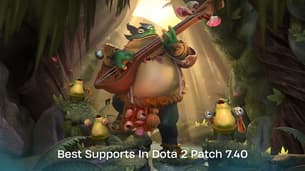 Найкращі підтримки в патчі Dota 2 7.40Відкрийте для себе найкращі підтримки в патчі Dota 2 7.40 - сильні сторони та коефіцієнт виграшу.
Найкращі підтримки в патчі Dota 2 7.40Відкрийте для себе найкращі підтримки в патчі Dota 2 7.40 - сильні сторони та коефіцієнт виграшу. Чемпіони кожного чемпіонату CS2 та CSGO: З 2013 по 2025 рікОгляд кожного чемпіона з CS2 та CSGO: Формати турнірів, місця проведення та найяскравіші моменти
Чемпіони кожного чемпіонату CS2 та CSGO: З 2013 по 2025 рікОгляд кожного чемпіона з CS2 та CSGO: Формати турнірів, місця проведення та найяскравіші моменти Як пройти знищення до руїн в Arc Raiders: Покрокове керівництвоПроходження Arc Raiders для Reduced to Rubble з маршрутами Блакитних воріт, фото цілей, точним розташуванням на карті і контекстом головоломок.
Як пройти знищення до руїн в Arc Raiders: Покрокове керівництвоПроходження Arc Raiders для Reduced to Rubble з маршрутами Блакитних воріт, фото цілей, точним розташуванням на карті і контекстом головоломок.Найкращі статті
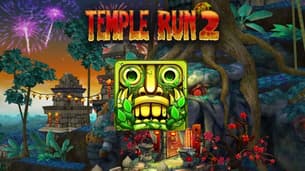 Топ-10 найкращих браузерних покі-ігорПоговоримо про те, у що можна пограти на популярному сервісі з ностальгічними браузерними проектами.
Топ-10 найкращих браузерних покі-ігорПоговоримо про те, у що можна пограти на популярному сервісі з ностальгічними браузерними проектами.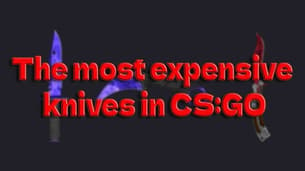 Найдорожчі скіни ножів CS2 та CS:GO у 2025.Хочете купити машину? А може, внутрішньоігровий скін за ту саму ціну може бути кращим?
Найдорожчі скіни ножів CS2 та CS:GO у 2025.Хочете купити машину? А може, внутрішньоігровий скін за ту саму ціну може бути кращим? 10 найкращих скінів M4A4 для CS2 та CS:GO, які можна придбати в 2025.Розповідаємо про найкращі варіанти надзвичайно популярної штурмової гвинтівки M4A4 у відомому шутері.
10 найкращих скінів M4A4 для CS2 та CS:GO, які можна придбати в 2025.Розповідаємо про найкращі варіанти надзвичайно популярної штурмової гвинтівки M4A4 у відомому шутері. 15 найкращих скінів для АК у CS2 та CS:GO, які можна купити сьогодніРозповідаємо про найкращі варіанти скінів на найпопулярнішу штурмову зброю в CS:GO.
15 найкращих скінів для АК у CS2 та CS:GO, які можна купити сьогодніРозповідаємо про найкращі варіанти скінів на найпопулярнішу штурмову зброю в CS:GO.  Найкращі скіни для ОГС, які варто купити у 2023 році: Бюджетний список (до $500)Розглянемо найкрасивіші скіни в CS:GO на AK-47, AWP, M4A1-S, USP-S, Desert Eagle та інші.
Найкращі скіни для ОГС, які варто купити у 2023 році: Бюджетний список (до $500)Розглянемо найкрасивіші скіни в CS:GO на AK-47, AWP, M4A1-S, USP-S, Desert Eagle та інші. Найкращі маркетплейси ОГС 2025: Де купувати та продавати скіни CSGOДавайте з'ясуємо, де найкраще купувати косметичні засоби для вашого інвентарю.
Найкращі маркетплейси ОГС 2025: Де купувати та продавати скіни CSGOДавайте з'ясуємо, де найкраще купувати косметичні засоби для вашого інвентарю. 


